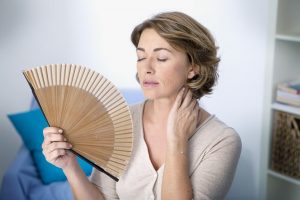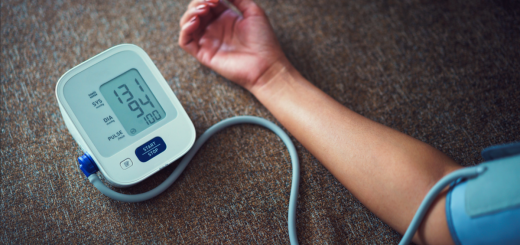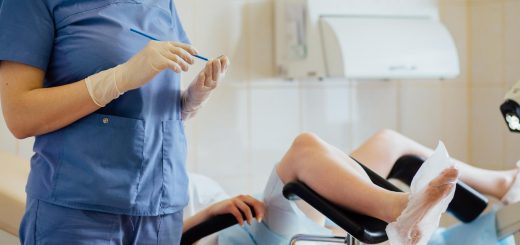Climax: to treat, mitigate, ignore?

On average, 40% of a woman’s life occurs during menopause. Let’s talk about ways to mitigate the transition period and maintain the body in a new state.
What is menopause?
Menopause is the time when the hormonal system of a woman ceases to consider the reproductive function as its main task. This is mainly reflected in a decrease in the level of the sex hormones estrogen and progesterone. They are normally produced by the ovaries and directly affect the ability to get pregnant and have a baby. When the ovaries cease to cope with their main task, the woman stops menstruating, otherwise this process is called menopause.
This usually occurs at the age of about fifty, however, the harbingers of menopause can appear as early as 40 years old. This is denoted by the word “premenopause”. The first year without menstruation is just the period of menopause itself. The condition after this year is called postmenopause.
What symptoms indicate menopause?
Menopause makes itself felt with nonspecific signs. Moreover, depending on the climacteric period, these symptoms may differ. So, from about 40 to 50 years old, a woman can experience daytime hot flashes and excessive night sweats, heart palpitations and pressure drops, mood swings and a decrease in sexual desire. Many of these symptoms will go away with established menopause.
In the first three years after the cessation of menstruation, excessive dryness of the mucous membranes and skin may appear. This is usually manifested by wrinkles, brittle nails, pain during sex or when urinating. Weight can change, both upward and downward.
The further into postmenopause, the more serious changes in a woman’s body can be. Hormonal changes create the prerequisites for the development of atherosclerosis and osteoporosis, muscle weakness and memory loss.
Is it necessary to treat menopause?
Despite the unpleasant symptoms, menopause is a natural state of a woman in adulthood. It does not require treatment in the same way that we treat diseases. Menopause cannot be “cured” or prevented. But menopause can be delayed, ease its course and take care of the prevention of diseases, which are facilitated by a long-term reduced level of sex hormones.
How to ease the course of menopause?
There are three non-mutually exclusive ways to relieve menopausal symptoms. The first is to take care of nutrition, exercise regime and proper sleep. The second is to turn to hormone replacement therapy. And the third is to add phytoestrogens and estrogen-like bioregulators to the diet.
Change your lifestyle
For women whose menopause begins with unexpressed signs, an attentive attitude to their body can already alleviate the course of menopause. The North American Menopause Society (NAMS) recommends:
Track down what triggers hot flashes and avoid these triggers. Hot flashes can be triggered by spicy food, smoking, or alcoholic beverages.
Prefer layered clothing for better temperature control.
During hot flashes, apply a piece of ice to your wrist or back of your neck.
Sleep in a cool room.
Choose bedding and pajamas that absorb moisture well.
Practice yoga and breathing exercises.
Keep weight under control.
Get enough sleep.
Maintain physical activity to reduce the risk of osteoporosis.
Take hormone replacement therapy
Hormone replacement therapy (HRT) is considered a reliable way not only to make it easier to get through menopause, but also to delay it. Hormone pills with estrogen and progesterone allow you to receive sex hormones from the outside, which the ovaries can no longer produce in the required amount.
HRT relieves unpleasant menopausal symptoms after just a few weeks of use and helps prevent the negative effects of menopause on the musculoskeletal and cardiovascular systems. On the recommendation of a doctor, you can start taking HRT at the very beginning of premenopause and thereby delay the onset of menopause, as well as make this transition process easier for the physical and emotional state of a woman.
Of course, hormone therapy has contraindications and side effects. It is assumed that long-term use of HRT, more than 10 years, may increase the risk of developing breast or ovarian cancer.
Use phytoestrogens
Phytoestrogens can become an alternative to hormonal drugs. Phytoestrogens, in fact, are also replacement therapy, only not with synthetic hormones, but with non-steroidal plant compounds. Plant estrogens are thought to be abundant in soybeans, flax seeds, beans, red grapes and other plants.
Plant isoflavones – substances similar to human estrogen – bind to hormone receptors in the body and act like sex hormones. However, the effect of phytoestrogens in moderate doses is insignificant, but unwanted side effects are not excluded. Thus, studies have found that phytoestrogens can cause headaches, endometrial hyperplasia, increased photosensitivity, and problems with the gastrointestinal tract.
Also, isoflavones should be taken with caution by women with hormone-sensitive tumors, because phytoestrogen is likely to stimulate the growth of unwanted cells. In addition, researchers are concerned about possible drug interactions between phytoestrogens.
Support natural ovarian https://en.wikipedia.org/wiki/Ovary bioregulation with cytamines
Cytamines are protein complexes from the tissues of young calves. It is believed that cytamines are similar in structure to the cells of the human body. This means that a drug from certain animal tissues will target the same tissues and organs in the human body. For example, if cytamine is created on the basis of the ovaries of cattle, then it will begin to act on the ovaries of a woman, stimulating them to work independently.


